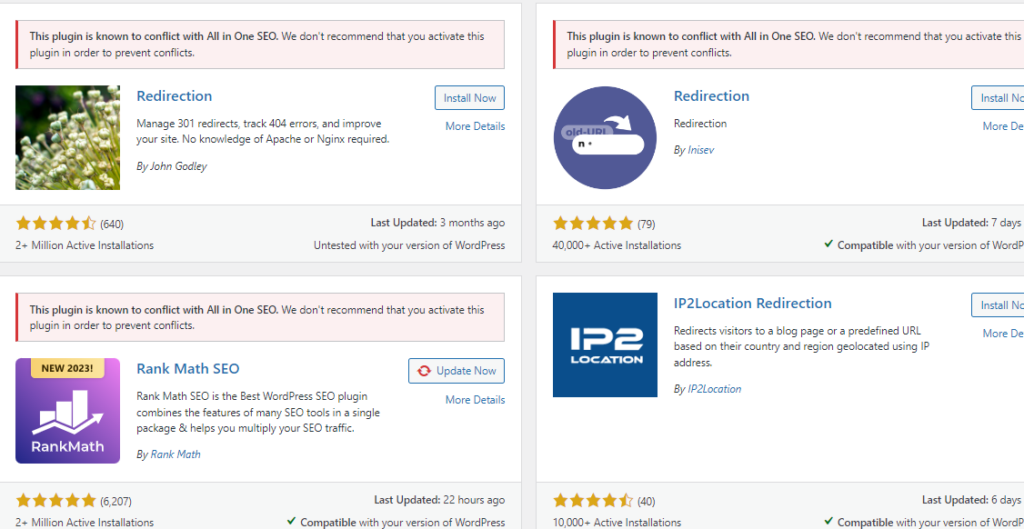
301 redirects play a crucial role in website management and SEO by permanently redirecting one URL to another. While they are generally reliable and effective, there are instances where users may encounter issues with 301 redirects not working as intended. In this article, we will explore the common reasons behind 301 redirect failures and discuss possible solutions to address these issues.
Table of Contents
What is a 301 Redirects?
A 301 redirect is a status code indicating that a particular URL has permanently moved to another location. Webmasters and SEO professionals often use 301 redirects to inform search engines that a page or resource has been permanently relocated. This helps in maintaining search engine rankings and ensuring a seamless user experience.
Incorrect 301 Redirect Rule on .htaccess File
The .htaccess file, residing in the /public_html directory of Apache web servers, plays a crucial role in configuring site-wide settings. When executing a large-scale migration or canonicalization, this file is commonly used to create redirect rules. An essential aspect of this process is crafting the correct 301 redirect rule.
Example of a basic 301 redirect rule in .htaccess:
RewriteEngine on
RewriteBase /
RewriteRule (.*) http://www.example.com/$1 [R=301,L]
Redirect Rules on WordPress Site Appearing Before cPanel Rules
WordPress, a widely used content management system, simplifies website management with its vast array of plugins and features. In cases where hosting providers offer managed WordPress services, users may encounter issues with redirect rules created through cPanel and WordPress plugins conflicting.

To mitigate this, users should check the order of redirect rules in the .htaccess file. If rules created in WordPress appear before those from cPanel, adjusting the order by moving the WordPress rules after the cPanel-generated ones can resolve the issue. Alternatively, users can rely on WordPress plugins specifically designed for redirects, simplifying the process and minimizing the chances of conflicts.
Common Reasons for 301 Redirect Failures
- Incorrect Implementation: One of the most common reasons for 301 redirect issues is incorrect implementation. This could involve errors in the syntax of the redirect code or placing the code in the wrong section of the website’s configuration files.
- Caching Problems: Web browsers and content delivery networks (CDNs) often cache redirects to improve page loading times. However, this caching can sometimes lead to issues if the redirect is updated but the cache is not cleared. Users may still be directed to the old URL.
- Server Configuration Issues: Server misconfigurations, such as conflicting rules in the .htaccess file or server mismanagement, can also result in 301 redirect failures. It’s essential to review server settings and configurations to ensure they align with the intended redirection strategy.
- Chain Redirects: Chain redirects occur when multiple redirects are set up in sequence, creating a redirection loop. This can confuse browsers and search engines, leading to errors and rendering the redirects ineffective.
Troubleshooting and Solutions
- Double-Check Redirect Implementation: To address issues related to incorrect implementation, thoroughly review the syntax of your redirect code. Ensure that it follows the correct format and that the redirect instruction is placed in the appropriate location within your website’s configuration files.
- Clear Caches: If caching is causing problems, clear the cache on both the server side and the client side. This involves refreshing browser caches, clearing CDN caches, and updating server caches. This step ensures that users receive the most recent redirect information.
- Review Server Configuration: Conduct a comprehensive review of your server configuration, especially the .htaccess file for websites hosted on Apache servers. Check for any conflicting rules or directives that may interfere with the proper functioning of 301 redirects.
- Address Chain Redirects: To resolve chain redirects, identify and eliminate unnecessary redirects in the redirection chain. Simplify the redirect structure to ensure a direct and effective route from the old URL to the new one.
Conclusion
While 301 redirects are powerful tools for managing website changes and maintaining SEO, they are not immune to issues. By understanding the common reasons for 301 redirect failures and implementing the appropriate solutions, webmasters and SEO professionals can ensure the smooth and effective redirection of users and search engine bots to the desired URLs. Regular monitoring and testing are essential to catch and address any issues promptly, ensuring a positive user experience and preserving search engine rankings.



